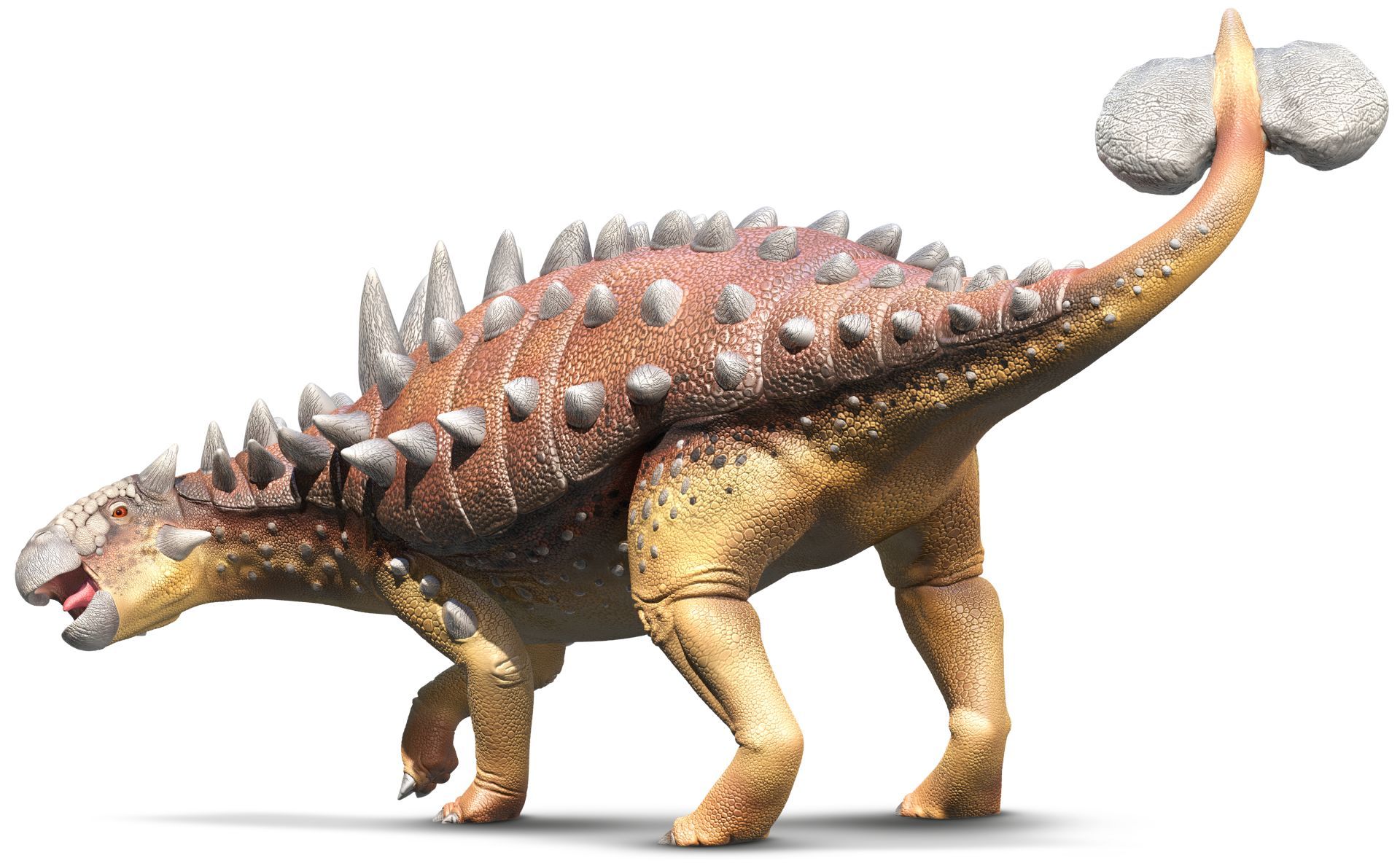This 3rd placement of dinosaur caches brings you to another family favorite spot we to go multiple times a year. This cache is placed with permission from the owners so please respect the people, property, and no night caching. Be mindful for muggles as it can get pretty busy at times and please re-hide as you found it.
Known for its heavy club at the end of its tail, Euoplocephalus (/juːˌɒploʊˈsɛfələs/ yoo-OP-loh-SEF-ə-ləs) is a genus of very large, herbivorous ankylosaurian dinosaurs, living during the Late Cretaceous of Canada. It has only one named species, Euoplocephalus tutus.
The first fossil of Euoplocephalus was found in 1897 in Alberta. In 1902, it was named Stereocephalus, but that name had already been given to an insect, so it was changed in 1910. Later, many more ankylosaurid remains were found from the Campanian of North America and often made separate genera. In 1971, Walter Coombs concluded that they all belonged to Euoplocephalus which then would be one of the best-known dinosaurs. Recently however, experts have come to the opposite conclusion, limiting the authentic finds of Euoplocephalus to about a dozen specimens. These include a number of almost complete skeletons, so much is nevertheless known about the build of the animal.
Euoplocephalus was about five and a half meters long and weighed about two and a half tonnes. Its body was low-slung and very flat and wide, standing on four sturdy legs. Its head had a short drooping snout with a horny beak to bite off plants that were digested in the large gut. Like other ankylosaurids, Euoplocephalus was largely covered by bony armor plates, among them rows of large high-ridged oval scutes. The neck was protected by two bone rings. It could also actively defend itself against predators like Gorgosaurus using a heavy club at the end of its tail.
Among the ankylosaurids, Euoplocephalus was exceeded in size only by Ankylosaurus, and perhaps Tarchia and Cedarpelta. Euoplocephalus was about 5.5 metres (18 ft) long and weighed about 2.5 tonnes (2.8 short tons).[1] It was also 2.4 metres (7.9 ft) wide. Like other ankylosaurids, it had a very broad and flat low-slung torso, about four feet high, positioned on four short legs.
The skull of Euoplocephalus can be distinguished from most other ankylosaurids by several anatomical details, including: the pattern of bony sculpturing in the region in front of the eyes; the form of the palpebral bones (small bones over the eyes),[2] which may have served as bony eyelids;[3] the shallowness of the nasal vestibule at the entrance of the nasal cavity;[2] the medial curve of the tooth rows in the upper jaw; and the teeth, which are relatively small, lacking true cingula, and having variable fluting of the denticles.[2] However, these traits are shared with a number of closely related forms, some of which in the past have been included in the genus.[4]Combining such forms, Walter Coombs and Teresa Maryańska in 1990 stated that Euoplocephalus could be distinguished based on four traits. The premaxillae, the front snout bones, are not covered by dermal ossifications. The external bony nostrils are slit-like, face to the front and are each divided by a vertical bone sheet or septum. The beak has a width equal to or greater than the distance between the rear maxillary, upper cheek, teeth rows. The foot has three digits, metatarsals with toes.[5] In 2013, Victoria Arbour and Phil Currie provided a differential diagnosis, setting Euoplocephalus apart from its nearest relatives. When compared with Anodontosaurus and Scolosaurus, Euoplocephalus lacks round osteoderms at the base of the squamosal and quadratojugal horns. Compared with Anodontosaurus it lacks small osteoderms at the bases of the large osteoderms on the first cervical half-ring, but, contrary to that genus, does in top view have large rounded osteoderms at the sides of the tail club. It differs from Dyoplosaurus in possessing sacral ribs that perpendicularly point outwards. It differs from Scolosaurus in possessing keeled osteoderms with a round or oval base on the top and sides of the first cervical half-ring and having a shorter rear blade of the ilium. Euoplocephalus differs from Ankylosaurus in possessing anteriorly directed external nostrils and in lacking a continuous keel between the squamosal horn and the supraorbitals.[4]
Congrats to nfr5013 for the FTF
